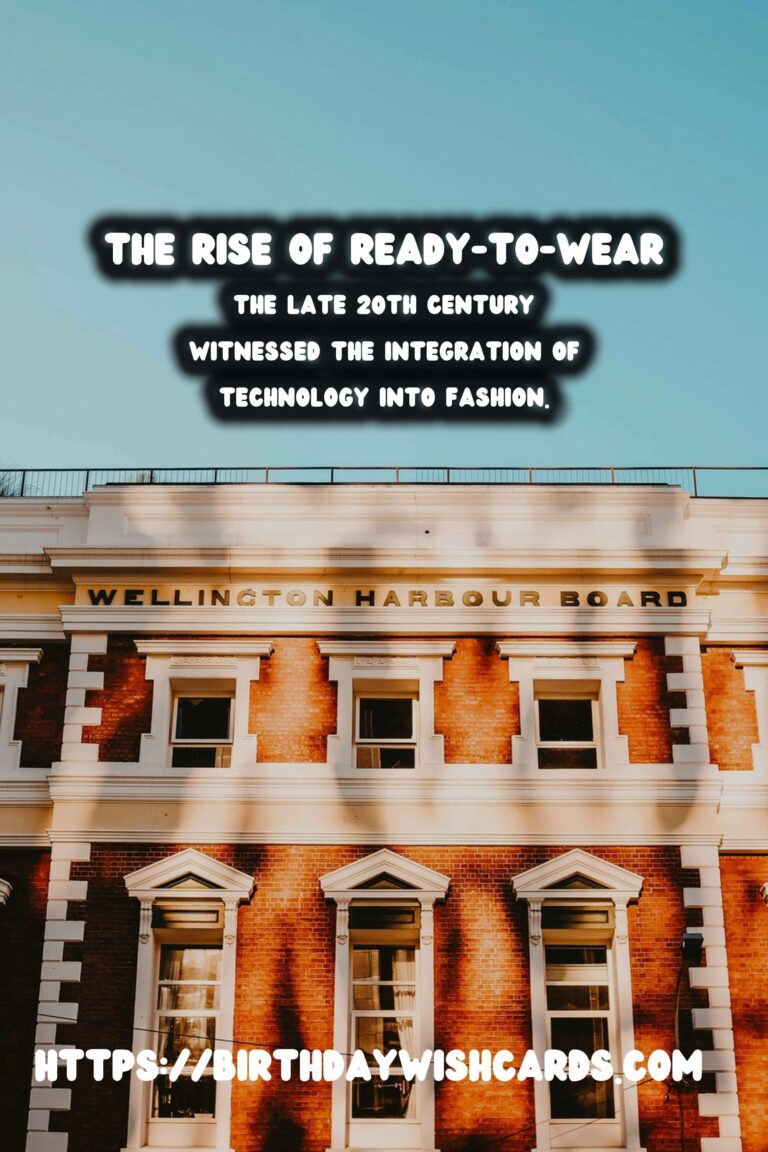
Fashion has always been a mirror reflecting the lifestyle, history, and culture of society. Over the decades, as societies evolved, so did the apparel, marked significantly by the rise of ready-to-wear fashion. From bespoke tailoring to mass-market clothing, the journey of fashion is as captivating as the designs themselves.
The Birth of Ready-to-Wear
Before ready-to-wear entered the scene, clothing was custom-made. Tailors crafted garments to fit the individual measurements. This bespoke approach was prevalent until the late 19th century, when industrialization began to reshape the fashion landscape.
With the introduction of mass production and sewing machines, fashion manufacturers started to produce standard-sized clothing in large quantities, marking the advent of ready-to-wear fashion. This revolution began in menswear, swiftly moving into women’s fashion as demand surged.
Impact of World War II
World War II was a turning point for ready-to-wear fashion. The necessity for practical and affordable clothing rose amid wartime economies, pushing retailers to popularize off-the-rack clothing. Simplified designs, made from cheaper materials, became commonplace, reinforcing the ready-to-wear industry.
The 1950s and 1960s: Decades of Style and Accessibility
The post-war era saw a boom in fashion innovation. The 1950s and 1960s were iconic for the democratization of fashion. Brands aimed to offer trendy, stylish garments at reasonable prices to a growing, fashion-conscious public. With the influence of cinema and television, style icons emerged, fueling consumer demand for accessible fashion encapsulating the latest trends.
The 1970s and 1980s: The Evolution Continues
The 1970s and 1980s marked further evolution. The economic boom allowed for greater consumer spending, and fashion became a means of self-expression. Design houses began to produce pret-a-porter (ready-to-wear) collections, bridging the gap between haute couture and mass fashion. This not only bolstered brand recognition but also expanded their market reach significantly.
The Digital Age and Modern Ready-to-Wear
The late 20th century witnessed the integration of technology into fashion. The internet revolutionized shopping, bringing ready-to-wear collections directly to consumers worldwide. Today, fashion is more accessible than ever; brands release new collections multiple times a year, responding to the rapidly changing trends.
Modern ready-to-wear is influenced heavily by global cultures, social issues, and technology, with sustainability becoming a focal point of recent developments.
Conclusion
The transformation of the fashion industry through the rise of ready-to-wear is a testament to the dynamic nature of society. While fashion trends change, the pursuit of style, comfort, and individuality remains constant. Ready-to-wear fashion made the distant dreams of owning trendy, well-crafted apparel a reality for millions, shaping the way we dress today.
Fashion has always been a mirror reflecting the lifestyle, history, and culture of society. The late 20th century witnessed the integration of technology into fashion.
#FashionHistory #ReadyToWear

